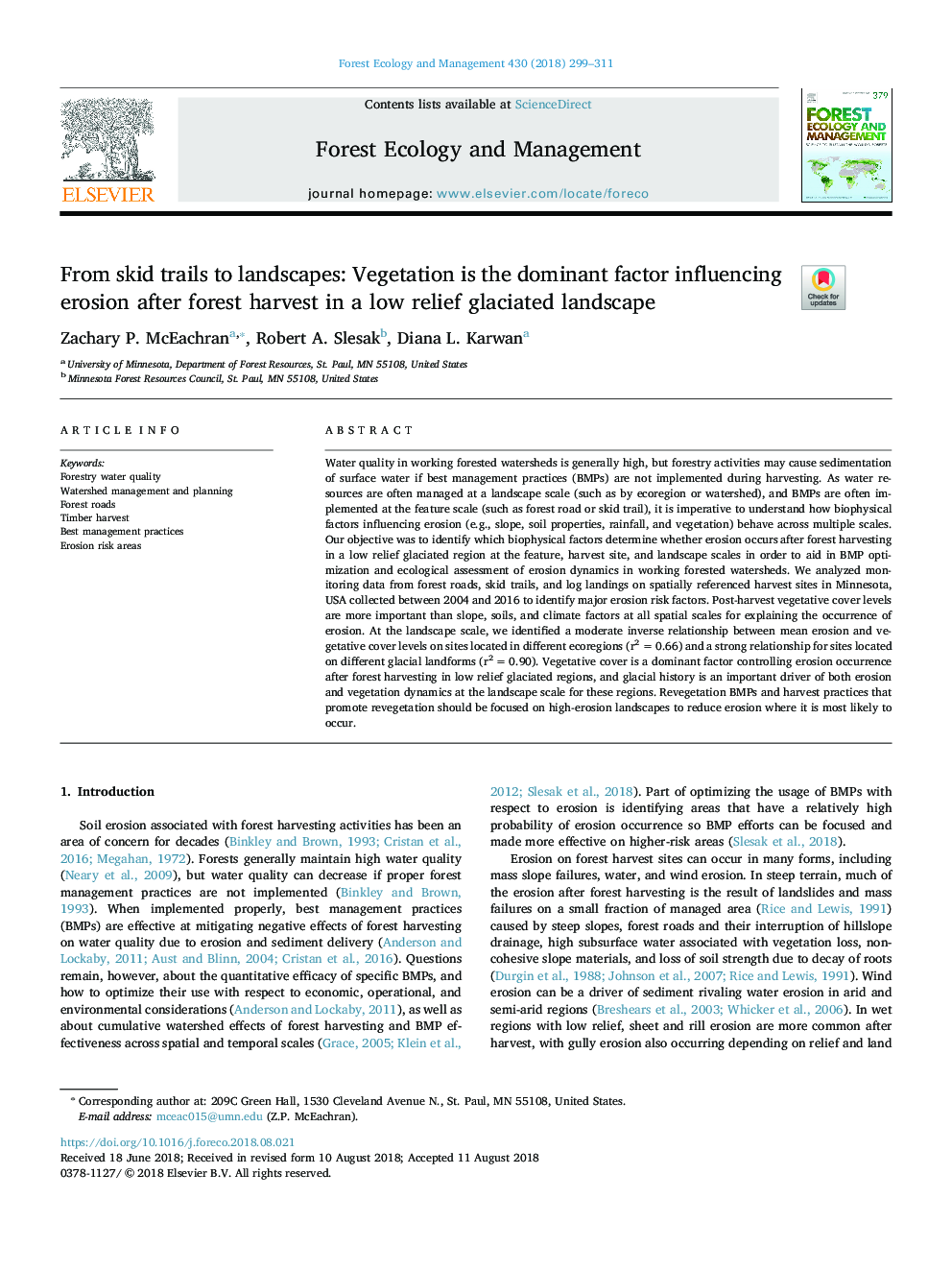| کد مقاله | کد نشریه | سال انتشار | مقاله انگلیسی | نسخه تمام متن |
|---|---|---|---|---|
| 11000027 | 1421330 | 2018 | 13 صفحه PDF | دانلود رایگان |
عنوان انگلیسی مقاله ISI
From skid trails to landscapes: Vegetation is the dominant factor influencing erosion after forest harvest in a low relief glaciated landscape
ترجمه فارسی عنوان
از مسیرهای پیاده روی به مناظر: گیاه شناسی عامل مهمی است که بر فرسایش پس از برداشت جنگل در یک چشم انداز تیره و تار کم
دانلود مقاله + سفارش ترجمه
دانلود مقاله ISI انگلیسی
رایگان برای ایرانیان
کلمات کلیدی
کیفیت آب های جنگلی، مدیریت آبخیزداری و برنامه ریزی، جاده های جنگل، برداشت چوب، بهترین شیوه های مدیریت، مناطق ریزش فرسایش،
موضوعات مرتبط
علوم زیستی و بیوفناوری
علوم کشاورزی و بیولوژیک
بوم شناسی، تکامل، رفتار و سامانه شناسی
چکیده انگلیسی
Water quality in working forested watersheds is generally high, but forestry activities may cause sedimentation of surface water if best management practices (BMPs) are not implemented during harvesting. As water resources are often managed at a landscape scale (such as by ecoregion or watershed), and BMPs are often implemented at the feature scale (such as forest road or skid trail), it is imperative to understand how biophysical factors influencing erosion (e.g., slope, soil properties, rainfall, and vegetation) behave across multiple scales. Our objective was to identify which biophysical factors determine whether erosion occurs after forest harvesting in a low relief glaciated region at the feature, harvest site, and landscape scales in order to aid in BMP optimization and ecological assessment of erosion dynamics in working forested watersheds. We analyzed monitoring data from forest roads, skid trails, and log landings on spatially referenced harvest sites in Minnesota, USA collected between 2004 and 2016 to identify major erosion risk factors. Post-harvest vegetative cover levels are more important than slope, soils, and climate factors at all spatial scales for explaining the occurrence of erosion. At the landscape scale, we identified a moderate inverse relationship between mean erosion and vegetative cover levels on sites located in different ecoregions (r2â¯=â¯0.66) and a strong relationship for sites located on different glacial landforms (r2â¯=â¯0.90). Vegetative cover is a dominant factor controlling erosion occurrence after forest harvesting in low relief glaciated regions, and glacial history is an important driver of both erosion and vegetation dynamics at the landscape scale for these regions. Revegetation BMPs and harvest practices that promote revegetation should be focused on high-erosion landscapes to reduce erosion where it is most likely to occur.
ناشر
Database: Elsevier - ScienceDirect (ساینس دایرکت)
Journal: Forest Ecology and Management - Volume 430, 15 December 2018, Pages 299-311
Journal: Forest Ecology and Management - Volume 430, 15 December 2018, Pages 299-311
نویسندگان
Zachary P. McEachran, Robert A. Slesak, Diana L. Karwan,
